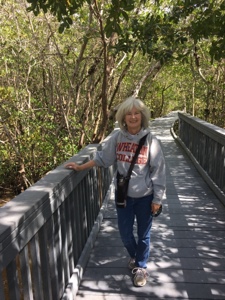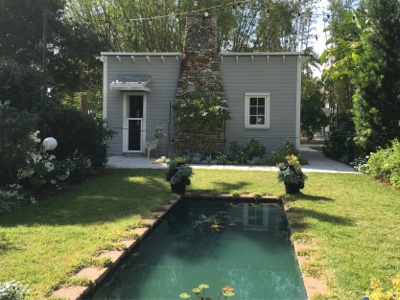Tim and I just happened to be on hand to see it pass through the St. Lucie Lock near Stuart, FL. We are in Indiantown, FL for a one-week build with Habitat for Humanity. This afternoon we were running errands in Stuart, when we passed the brown highway sign that read St. Lucie Lock. I said to Tim, "Let's stop and see the lock." Boy, are we glad we did!
Hōkūleʻa and its sister canoe, Hikianalia, are sailing the Earth's oceans to promote a sustainable way of life. Check this link to see their route.
Hōkūleʻa and its sister canoe, Hikianalia, are sailing the Earth's oceans to promote a sustainable way of life. Check this link to see their route.
Last week Hōkūleʻa's scheduled stop in Cuba coincided with President Obama's visit.
Today the canoe passed in front of our very eyes. On June 8th, the crew plans to dock in New York City where they will participate in the United Nation's World Oceans Day. Then they will cross the Atlantic a second time to visit Europe before angling back through the Panama Canal on their way home to Hawaii.
If all goes well (i.e. no bad weather, the two dugout hulls stay lashed together with rope, steering oar doesn't snap, etc.), they'll make home port sometime in 2017.
David, a neurologist and the medical officer for Hōkūleʻa volunteer crew members, was on shore next to us. He gave us a brief account of what life aboard the canoe is like. There are between 11-14 crew members on each leg of the voyage.
David, a neurologist and the medical officer for Hōkūleʻa volunteer crew members, was on shore next to us. He gave us a brief account of what life aboard the canoe is like. There are between 11-14 crew members on each leg of the voyage.
They sleep head to toe underneath these canvas tarps on each hull. Underneath the bunks is the storage area, although there isn't much room for anything except the necessities of food and water.
Today a tow boat guided them into the lock but once both crafts reached the lower level of the St. Lucie Canal, Hōkūleʻa was on its own once again.
Hōkūleʻa will sail up the Eastern seaboard with stops (among others) at Newport News and Old Town Alexandria. Look here for their planned stops.
This was all so interesting to us, because we only learned about the Okeechobee Waterway with its series of canals and locks during our stay in Fort Myers. If you want to sail the Intercoastal Waterway, the Okeechobee is a shortcut between the Atlantic and the Gulf of Mexico.
Hōkūleʻa will sail up the Eastern seaboard with stops (among others) at Newport News and Old Town Alexandria. Look here for their planned stops.
This was all so interesting to us, because we only learned about the Okeechobee Waterway with its series of canals and locks during our stay in Fort Myers. If you want to sail the Intercoastal Waterway, the Okeechobee is a shortcut between the Atlantic and the Gulf of Mexico.
On Monday before the Indiantown Habitat build began, Tim and I biked 30 miles along the berm that surrounds Lake Okeechobee, a distance of 110 miles if you circle the entire lake.
We began our bike ride at the Port Mayaca Locks on the east side of the lake.
The trail is not shady; nor is it very scenic but we did see our first alligator.
When we returned, we saw a sailboat go through the lock, but we were too far away to get photos of the process.
But this afternoon we were definitely in the right place at the right time!























































